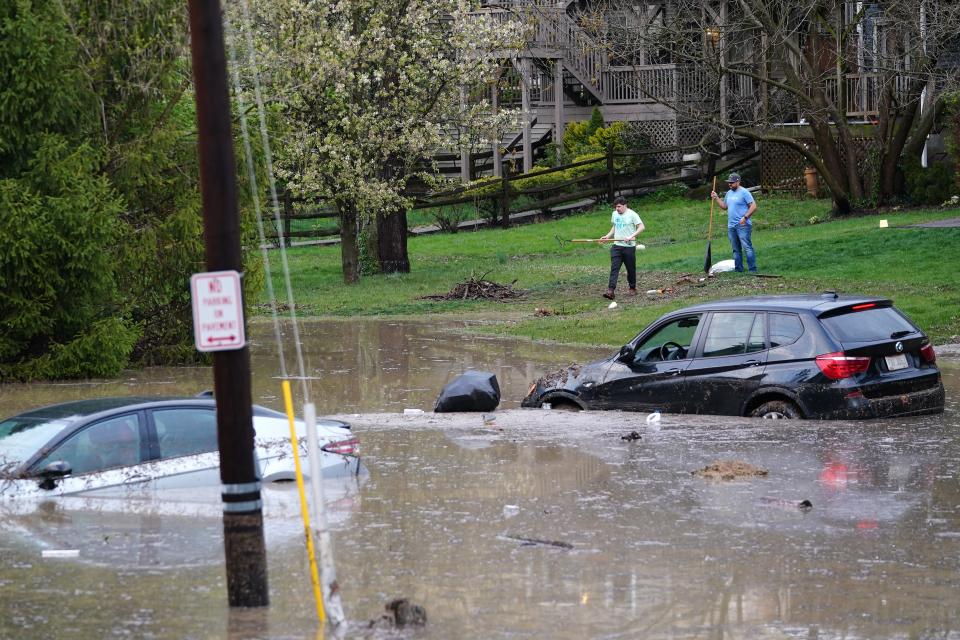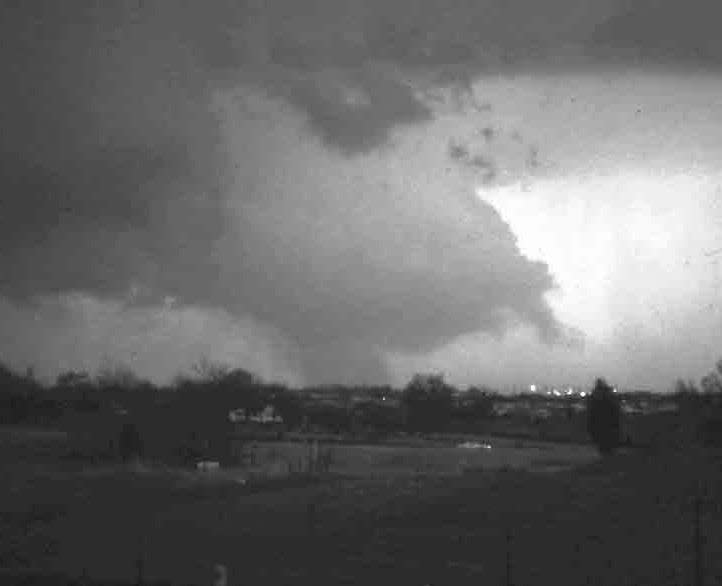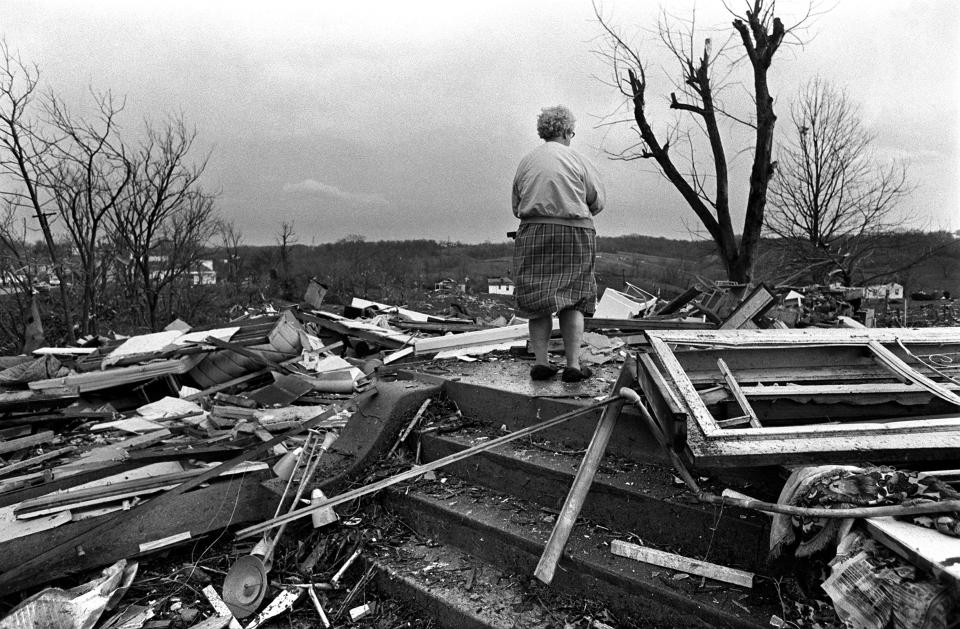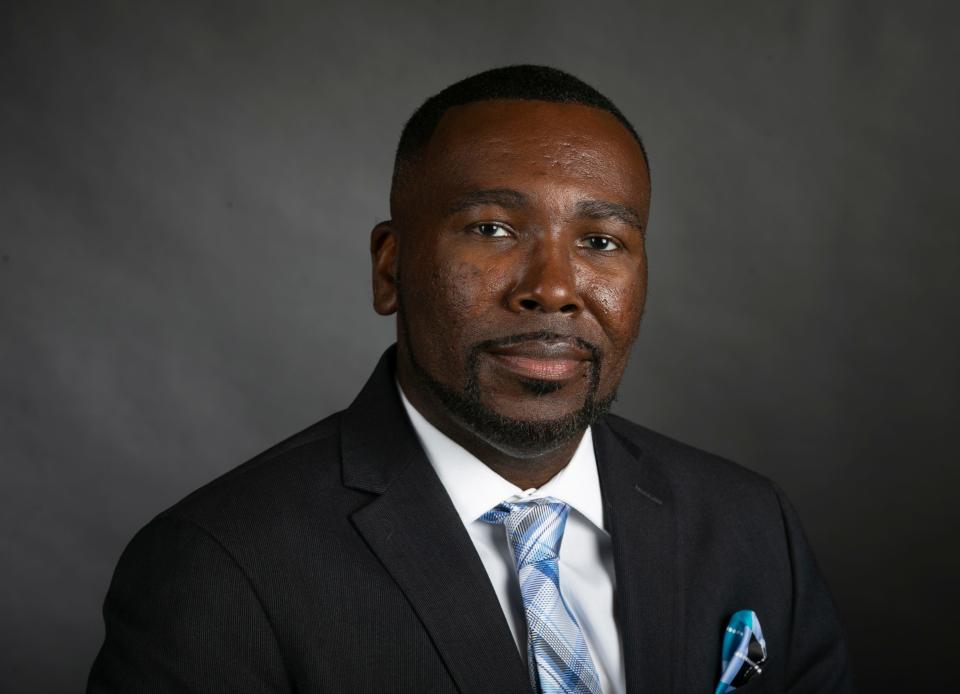Storms on eve of 50th anniversary of April 1974 tornadoes an eerie reminder for some
Daryl Smith takes tornado watches and warnings very seriously. He didn't always. Surviving the second-largest tornado outbreak on record for a single 24-hour period changed him.
"Before that time, in Northern Kentucky and Cincinnati, if the weather man said there was a tornado watch or warning, people didn't give much heed to it," said Smith, 62, of Petersburg, Ky. "Tornadoes happen in Kansas; they don't happen in Cincinnati."
Smith couldn't have been more wrong. Wednesday marks the 50th anniversary of the 1974 Super Outbreak, the 24-hour period between April 3 and April 4 during which 148 tornadoes touched down in 13 different states. Thirty-nine people were killed, 2,000 people were injured and 7,000 homes were destroyed across Ohio, with the worst devastation occurring in the city of Xenia. It was considered the most widespread tornado outbreak recorded in history until 2011 when 360 tornadoes rocked the U.S. over a three-day period.
The severe storms that rumbled through the region Tuesday afternoon brought a flood of watches and warnings and a deluge of rainwater, but no widespread reports of major damage in Greater Cincinnati. The weather also brought back memories for Smith.

"The weather (Tuesday) is somewhat similar to what we had 50 years ago," Smith said. "It's a little eerie."
In Northern Kentucky where Smith lives, authorities said there were reports of trees down, but no widespread damage on Tuesday. Smith and his family weren't so lucky on April 3, 1974, when a tornado ripped apart their home in Hebron. Smith, who was 12 years old then, remembers that "interesting afternoon" like it was yesterday.
"It got very dark and, all of a sudden, it began to hail. It was the largest hail I'd ever seen ? golf ball-sized," Smith said. "I asked my mom, who was cooking dinner, if I could go outside and get some hail balls. Of course, she said no."
When the hail stopped, Smith said he snuck out the front door to collect three or four balls of the solid ice. Had he looked up, he would have seen the tornado coming.
"But I was so focused on getting the hail balls and not getting caught, I didn't notice it," he said.
Shortly after going back inside to show his mom what he'd found, the two of them looked out the kitchen window and spotted a man sprinting across an open field. They didn't realize it at the time, but the man was desperately scrambling for cover from the approaching tornado in a nearby gulley.
Then, the electricity shut off.
"My mother was upset because dinner was five minutes from being done, and my dad had been on the phone talking to my grandmother who was a bit of a talker," Smith said. "Interestingly, when the electricity went off, the telephone did not go out."

Smith said suddenly his dad said, "Mom, I gotta go," and hung up the phone, which caught his attention, "because you didn't hang up on my grandmother."
Smith said his father quickly ushered him, his mother and 10-year-old sister to the basement where they huddled underneath a table.
"When we hit the bottom of those basement steps, it sounded like a freight train was outside," Smith recalled. "I remember looking up at our basement window and all I could see was a brown swirling. I never prayed harder in my life."
Then suddenly, it got "deathly silent," Smith said. "You couldn't hear anything. No birds chirping. It was just still."
Smith said when his father opened the basement door, they could see their dining room wall, but the ceiling was completely gone and their living room couch was in the backyard. The family's dog, which had been fenced in the backyard, was found alive but wound up inside the garage.
"That's when it hit me," Smith said of what had just happened and the scope of the damage.

Smith said the most poignant moment of the experience didn't come that day but a month or so later when he asked his dad how he knew to send the family to the basement. After all, none of them saw the tornado coming or were told about it through any kind of alert ? the tornado warning systems and safety protocols that exist today weren't as robust back then.
"He said a little voice told him," Smith said. "My dad believes it was the Holy Spirit telling him to take his family to the basement. Had my dad not listened to that voice, I wouldn't be here today. We would have all likely been sucked away and killed in that storm. Him listening to that 'little voice' saved our lives."
Smith said he was also touched by how the community came together in the aftermath of the storm. One of his neighbors, David Pattison who still lives in the same house on Graves Road, let Smith's family stay with him for four months until their home was rebuilt that August. Smith said his family lived in Hebron for two more years until his father got transferred by his job with the Army Corps of Engineers. The house at 448 North Bend Road still remains located across from the Hebron Library.
Smith said, for years, his little sister would cry whenever there was a bad storm, a trauma she would eventually grow beyond. He said he thinks back on that day not with fear, but with gratitude.
"We miraculously survived," he said. "It was neat to see people surround us with love and support afterward. A good thing came out of a tragic event."
Today, Smith teaches business classes at Cedarville University, which is just 8 miles from Xenia, where 32 people died from that same tornado. He sometimes shares his story with his students.
"It's important for people to remember things like that," Smith said of passing along history.
His advice to them and the rest of us: "Take tornado watches and warnings seriously."
Opinion and Engagement Editor Kevin S. Aldridge can be reached at [email protected]. X, formerly known as Twitter: @kevaldrid.

This article originally appeared on Cincinnati Enquirer: Storms an eerie reminder of deadly April 1974 tornado super outbreak